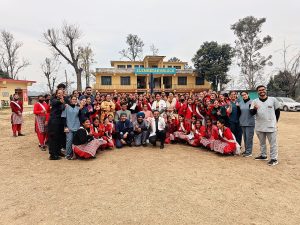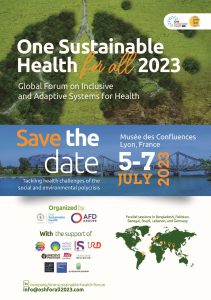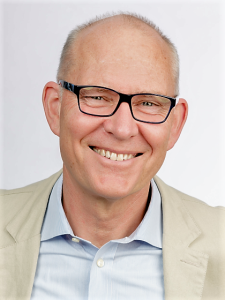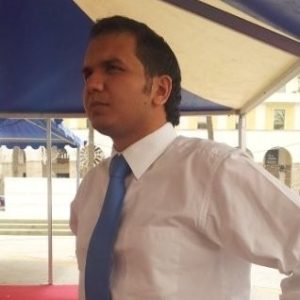This article emphasizes the crucial importance of communication during a health crisis. It highlights how accurate and up-to-date information, accessibility and inclusiveness in communication, empathy and compassion in the way of communicating, and the proper use of technology are key elements for effective communication in times of pandemic. The benefits of effective communication are mentioned, such as preventing the spread of the virus, promoting responsible behaviour, managing misinformation and promoting solidarity and emotional support. The challenges facing communication in a pandemic, such as misinformation and inequality in access to information, are also recognized
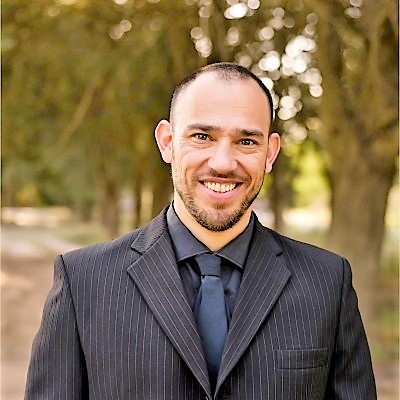
By Nicolas Castillo
Biochemical. Private Laboratory Santa Clara de Saguier Sanatorium, Santa Fe, Argentina
The Value of Communication in a Pandemic
Materials and Methods
The materials used in this study include data from various sources, including databases, public health reports, and scientific literature.
We conducted a comprehensive review of the literature on health communication in times of pandemic, using a systematic approach to identify relevant articles. We searched multiple databases, including PubMed, Scopus, and Web of Science, using keywords related to epidemiological surveillance and pandemics. We also reviewed the websites of national and international public health organizations, such as the World Health Organization (WHO) and the Centers for Disease Control and Prevention (CDC), to identify guidelines and protocols for pandemic surveillance.
The results of our review provide an overview of the key principles and challenges of health communication in times marked by pandemic.
Introduction
The COVID-19 pandemic has had a significant impact on the way we communicate as a society. At a time when movement restrictions, social distancing and quarantine measures have disrupted our daily lives, communication has become more crucial than ever. The way we communicate with others, whether on a personal, community or global level, has proven to be a determining factor in managing the pandemic, disseminating accurate information and promoting solidarity and mutual support. This article will examine the value of communication in a pandemic, highlighting how effective communication can contribute to preventing and mitigating the negative effects of a public health crisis, as well as promoting resilience and recovery in difficult times. The various forms of communication used during the pandemic will be explored, including interpersonal communication, online communication, and communication by public health authorities and government leaders. In addition, communication challenges and opportunities in a pandemic will be discussed, such as the need to manage misinformation, the importance of empathy and compassion in communication, and the need to adapt to changes in communication way we communicate in a virtual environment. In summary, this article will highlight how effective communication has been a key resource in the fight against the COVID-19 pandemic, and how its value in times of crisis has been instrumental in addressing challenges and building a stronger and more resilient community.
Development
The COVID-19 pandemic has highlighted the critical importance of effective communication in times of health crises. Communication has become an essential tool to address the challenges posed by the pandemic, and has played a fundamental role in preventing, mitigating and recovering from the negative effects of the crisis on society.
First, communication has been essential in preventing the spread of the virus. The dissemination of accurate and timely information on prevention measures, such as social distancing, the use of masks, hand hygiene, and public health guidelines, has been crucial to educate the population and promote responsible behaviors. Clear and accessible communication, aimed at diverse audiences and communication channels, has been essential to increase public awareness and encourage adherence to preventive measures.
Furthermore, effective communication has been essential in mitigating the negative effects of the pandemic. Up-to-date and accurate information on the evolution of the epidemiological situation, government restrictions and regulations, and available resources, has enabled individuals and communities to make informed decisions and adapt to changes in their environment. Communication has also been crucial in addressing misinformation and the spread of fake news, which can lead to confusion and panic in times of crisis. Communication based on science and credible sources has been critical to maintaining public trust and ensuring an effective response to the pandemic.
Additionally, communication has played a fundamental role in promoting solidarity and mutual support in times of crisis. Empathy and compassion in communication have been important in connecting with people affected by the pandemic, expressing emotional support, and promoting unity in the community. Communication has been used to mobilize resources, coordinate community efforts, and promote collaboration among different sectors of society, such as government, health organizations, businesses, and civil society.
Communication has also evolved during the pandemic, with a significant increase in online communication and the use of digital platforms. Virtual communication has become an important tool for maintaining social connectivity, distance education, telemedicine, and information dissemination. However, it has also raised challenges, such as the need to ensure the accessibility, reliability and privacy of information online, as well as the ability to adapt to the digital divide and ensure that everyone has access to the necessary information and resources.
In short, the value of communication in a pandemic is fundamental. Effective communication has been essential for the prevention, mitigation and recovery of the negative effects of the pandemic, promoting adherence to prevention measures, addressing misinformation, promoting solidarity and coordinating community efforts.
Discussion
Communication in a pandemic presents both opportunities and challenges. First, the rapid dissemination of accurate and up-to-date information has been crucial in preventing the spread of the virus and ensuring that the public is informed about government prevention and regulatory measures. However, there has also been a significant increase in misinformation and fake news, which has generated confusion and panic in society. The management of false information has become a major challenge for authorities and health professionals, and it is essential to promote the veracity and reliability of information in communication during a pandemic.
Another challenge is to ensure accessibility and inclusion in communication. The pandemic has exacerbated the digital divide and inequality in access to information, especially for marginalized and under-resourced communities. It is important to ensure that communication is accessible to everyone, including people with disabilities, older people, and communities with language or cultural barriers. Promoting inclusive and equitable communication is essential to ensure that everyone has the information they need to protect themselves and face the pandemic.
Empathic and compassionate communication has also been essential in a pandemic. The health crisis has had a significant emotional impact on people, with loss of life, jobs, and changes in lifestyle. Communication must be sensitive to people’s emotions and needs, offering emotional support, showing empathy and providing support resources. Lack of empathy in communication can have negative effects on people’s mental and emotional health, and can undermine trust in authorities and in the information provided.
Despite the challenges, communication in a pandemic has also presented opportunities. The use of digital platforms and social networks has allowed a rapid dissemination of information at a global level, and has facilitated the connection and collaboration between people and communities. Virtual communication has been used for distance education, telemedicine, and to maintain social connectivity during times of physical distancing. Technology has opened up new forms of communication and has proven to be a valuable tool in managing the pandemic.
Effective communication in a pandemic is invaluable. It has been instrumental in preventing, mitigating and recovering from the negative effects of the crisis, promoting responsible behaviours, addressing misinformation, promoting solidarity and connecting people. However, it has also faced challenges in terms of managing misinformation, accessibility and inclusiveness, and empathy in communication. Adapting communication to changing circumstances and promoting truthful, inclusive and empathetic communication are essential to face the challenges and take advantage of the opportunities that communication offers in a pandemic.
Conclusion
In short, the value of communication in a pandemic is incalculable. Accurate and up-to- date information, accessibility and inclusion in communication, empathy and compassion in the way of communicating, and the appropriate use of technology are key elements for effective communication during a health crisis. Communication has been essential in preventing the spread of the virus, in promoting responsible behavior, in managing misinformation, in connecting and collaborating between people and communities, and in promoting solidarity and emotional support.
However, challenges have also been faced in terms of misinformation, inequalities in access to information, and the need for empathetic and compassionate communication in times of crisis. It is essential to address these challenges and adapt communication to changing circumstances to ensure that everyone has access to accurate and reliable information, and that people’s emotional needs are met.
In conclusion, effective communication in a pandemic is essential for public health and the well-being of society. The promotion of truthful, inclusive, empathetic communication and adaptation to the needs of the population is essential to face the challenges and take advantage of the opportunities that communication offers in times of crisis. The assessment and strengthening of communication in a pandemic contribute to the protection of the health and well-being of affected individuals and communities.
Declaration of Conflict of Interest: As the author, I declare that there is no conflict of interest.
Thanks: To my family for accompanying me at all times.
Bibliographic Citations
- Liu, Q., Zheng, Z., Zheng, J., Chen, Q., Liu, G., & Chen, S. (2020). Health communication through mass media during the early stage of the COVID-19 outbreak in China: digital issue modeling approach. Internet Journal of Medical Research, 22(4), e19118.
- Bavel, JJV, Baicker, , Boggio, PS, Capraro, V., Cichocka, A., Cikara, M., … & Willer, R. (2020). Using the social and behavioral sciences to support the response to the COVID-19 pandemic. Nature Human Behavior, 4(5), 460-471.
- Mian, & Khan, S. (2020). Coronavirus: The spread of misinformation. BMC Medicine, 18(1), 89.
- Chan, MS, Jones, CR, Hall Jamieson, , & Albarracín, D. (2020). Debunking: A meta-analysis of the psychological efficacy of messages countering misinformation. Psychological Science, 31(11), 1381-1395.
—-
By the same author on PEAH
Epidemiological Surveillance in Pandemics
Population Aging, a Challenge for Public Health in Latin America and the World




